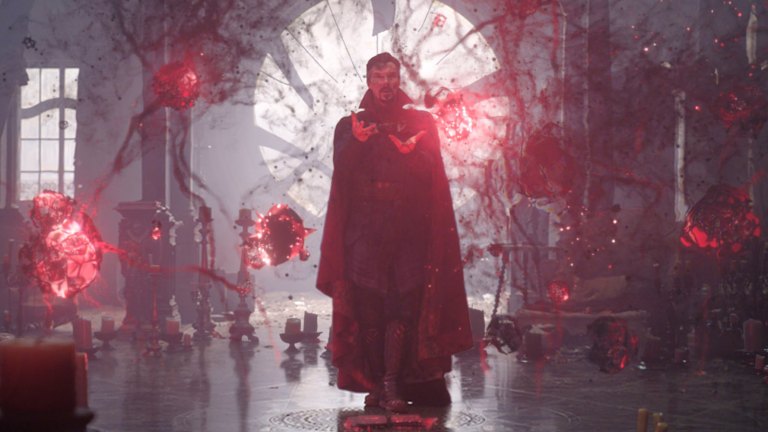Doctor Strange 2: How the Villain Changed During Rewrites
Writer Michael Waldron reveals how the script for Doctor Strange in the Multiverse of Madness evolved once he and Sam Raimi joined the project.

This article contains Doctor Strange 2 spoilers
Doctor Strange in the Multiverse of Madness has had a somewhat bumpy ride to the screen. The film was officially announced in July 2019 at that year’s San Diego Comic-Con, with Benedict Cumberbatch returning to the title role and Scott Derrickson coming back as director. But Derrickson left the following January and was replaced by Sam Raimi – a choice approved almost across the board by Marvel fans.
Raimi started from scratch, with Michael Waldron coming on board to pen the script, but filming was delayed from a May 2020 start due to the COVID-19 pandemic. The movie finally went into production that November, but by then Marvel had also begun shifting its release date, with the film hopping from May 2021 to November 2021 to March 2022 to May 2022, when it finally came out.
Den of Geek spoke recently with Michael Waldron, asking him how much the script changed over the movie’s long road to release and whether any elements of the Derrickson-era version had been retained.
“When I originally came on in February of 2020, Sam and I inherited the story that had been worked on by Scott and Jade Bartlett, the original writer on the project,” he says. “It had a lot of really cool ideas in it, and we were initially going to just try to figure out our version of that story in time to start shooting the movie in May. Then COVID happened a month later, and the movie was pushed, which afforded us an opportunity to kind of start over and re-examine what we wanted the movie to be.”
Although it had been confirmed at Comic-Con that Elizabeth Olsen would appear in the film as Wanda Maximoff/Scarlet Witch, Waldron says it was during the period that he and Raimi retooled the screenplay that the idea came up to make Wanda the main villain – although Waldron adds that other villains had been considered as well.
“There was different stuff,” he acknowledges. “I think it’s been reported that once upon a time, there was some talk of Nightmare and stuff like that. But when I came on board, it was a multiverse story. And so it was always about trying to figure out who that multiversal adversary was going to be.”
Another factor that played into the development of Doctor Strange in the Multiverse of Madness was when Sony Pictures scheduled Spider-Man: No Way Home for December of 2021, which pushed Strange into 2022. The flipping of the two movies meant that Multiverse of Madness would no longer be Strange’s first interaction with the intricacies of the multiverse.
“It meant that Stephen would have had some real experience with the multiverse by now, that he had been on a multiversal adventure already,” says Waldron. “This isn’t his first rodeo, so to speak. So that kind of recontextualizes the way you approach all of this. He understands the dangers of it more.”
Waldron adds that Strange’s exploits with Peter, MJ and Ned in No Way Home gave him a better understanding of how to deal with teenagers – an important tool as he goes universe-hopping with new MCU hero America Chavez: “He had just been on an adventure with kids before this, and I think that might be the biggest thing affecting how he would interface with America. She wasn’t a totally unknown quantity to him when it came to relating to a teenager.”
Doctor Strange in the Multiverse of Madness is out in theaters now.
